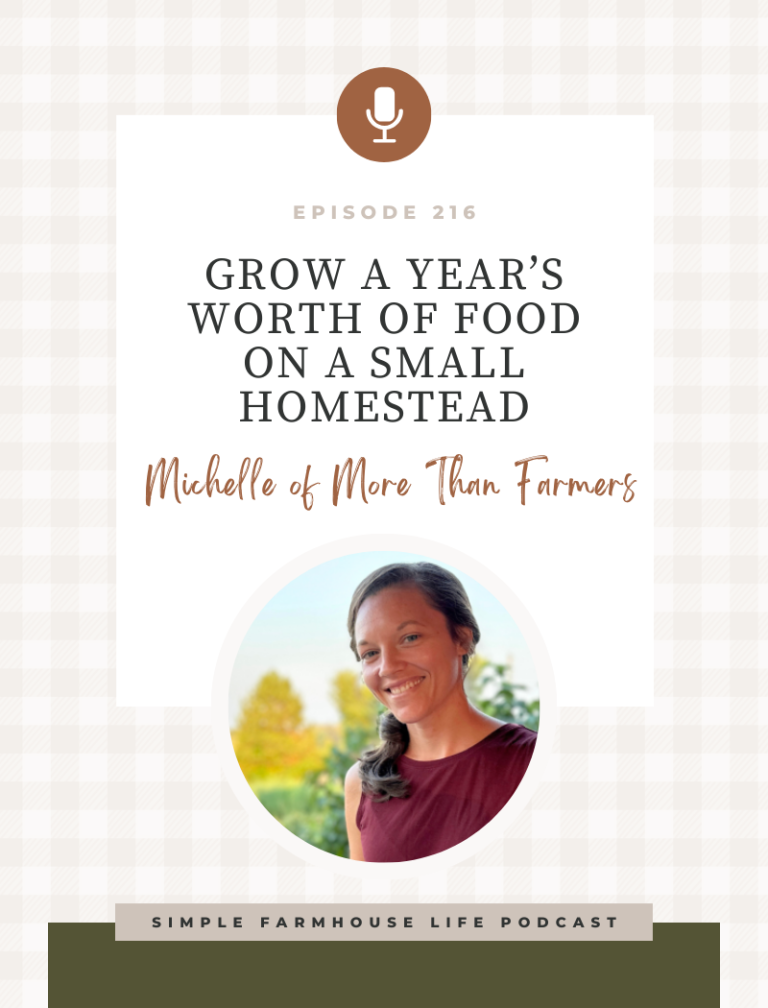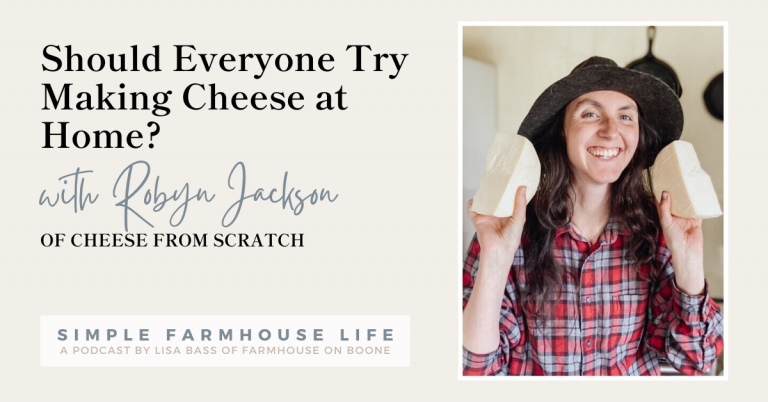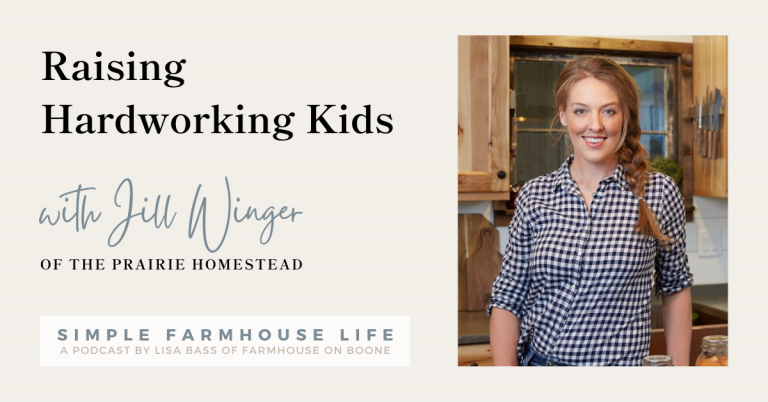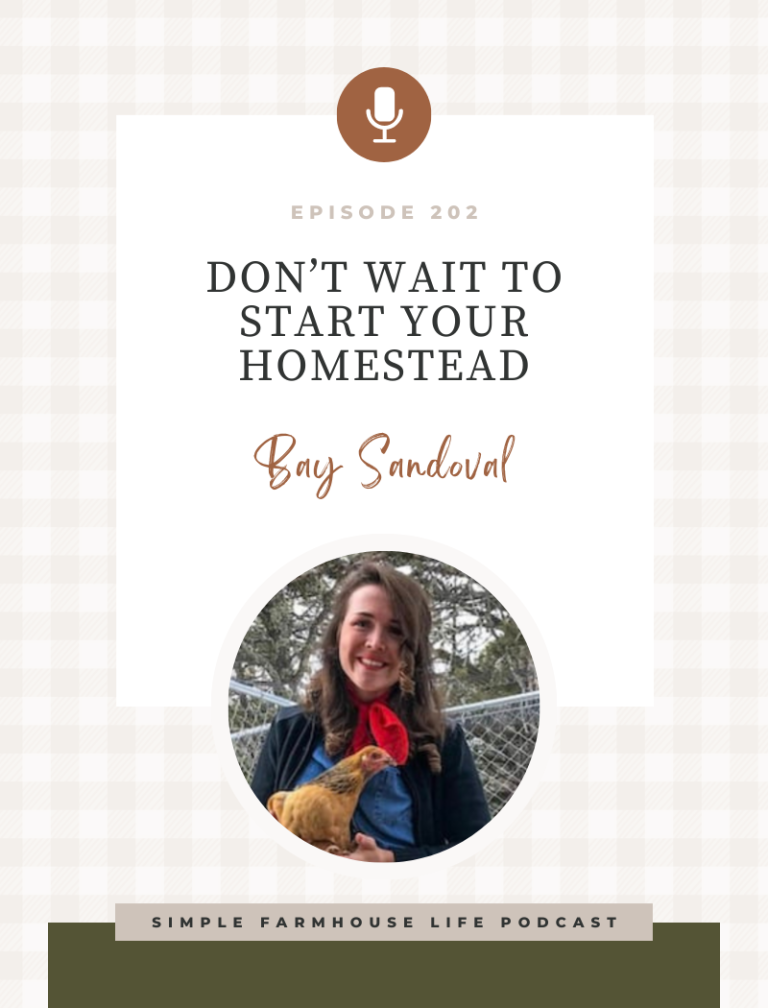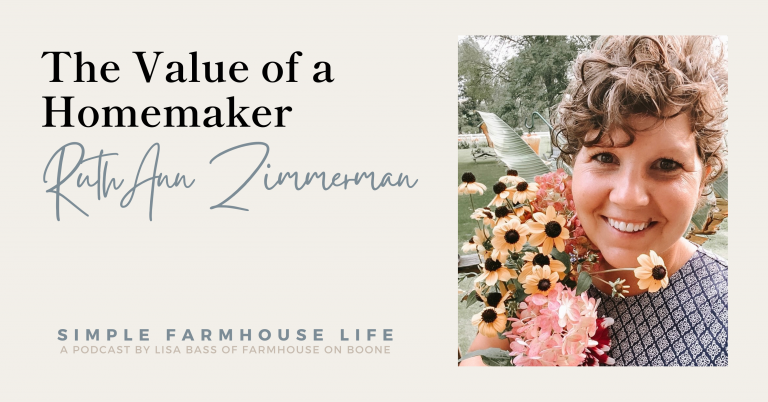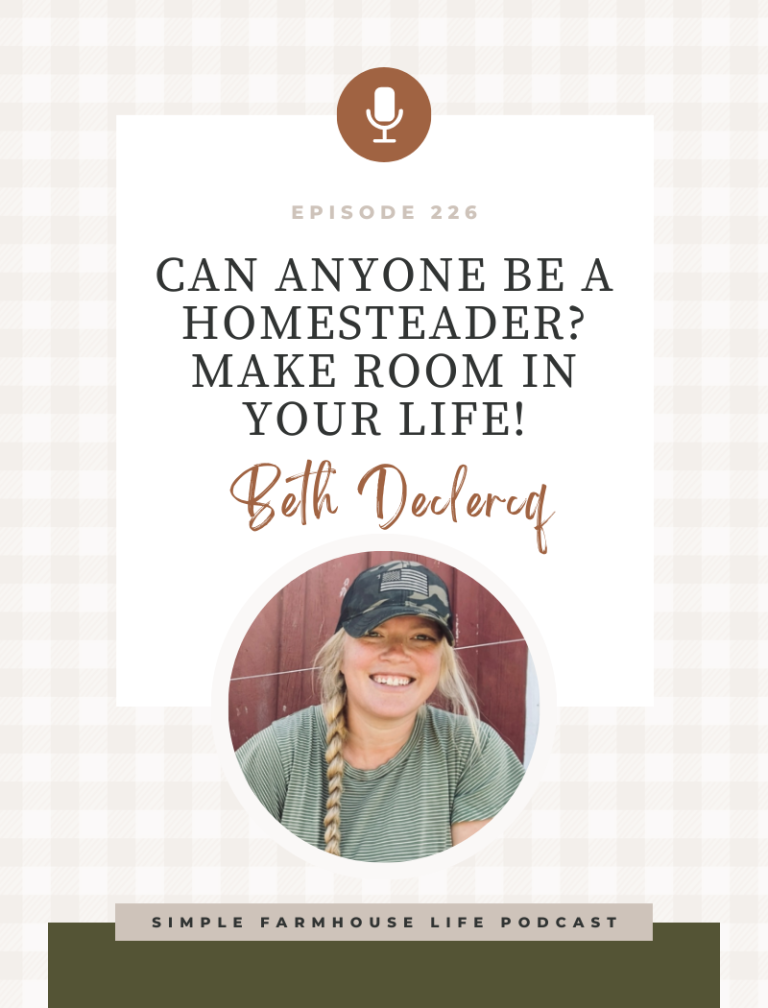Episode 130 | American Agriculture | Natalie Kovarik of Kovarik Cattle Co.
I have been wanting to talk to today’s podcast guest for over a year! Natalie Kovarik is a Nebraska ranch wife and mom who uses her voice to educate about the realities of agriculture. Unfortunately, the public dialogue is full of misconceptions about the role and impact of agriculture on our environment and health. Natalie is a wealth of knowledge about this complex topic, and she does a beautiful job of sharing all of the ways in which agriculture adds tremendous value to our lives. I hope you learn as much from this conversation as I did.
In this episode, we cover:
- Why it is important to be educated about where your food comes from
- How agriculture is more diverse than you might think
- The truth behind the “grass-fed” label
- Why it’s actually a good thing that a large percentage of U.S. land is used for grazing animals
If we can understand more about what we’re putting into our bodies and feel good about that and make the right choices, we’re going to be healthier individuals overall.
Natalie Kovarik
About Natalie
A modern day ranch wife and mom, Natalie along with her husband Luke and their three sons (Tad, Jaks, and Rue), ranch in central Nebraska in a beautiful area known as the Nebraska Sandhills. She shares her personal journey of ranching and family-ing as a way to showcase the beauty behind the western lifestyle, as well as foster a community who believes in the Agricultural world as much as she does.
Resources
Sacred Cow by Diana Rodgers of Sustainable Dish
Natalie’s interview with Frank Mitloehner on cattle and greenhouse gases
Clarity and Leadership for Environmental Awareness and Research at UC Davis
The Big Fat Surprise by Nina TeicholzInterested in crafting, sharing, and monetizing your own Ag story? Check out Natalie’s online course and podcast.
Connect
Natalie Kovarik of Kovarik Cattle Co. | Website | Instagram | YouTube | Podcast | Pinterest | Spotify
Lisa Bass of Farmhouse on Boone | Blog | YouTube | Instagram | TikTok | Facebook | Pinterest
Join us in the Simple Farmhouse Life Facebook community!
Watch
More Resources
Want to start your own blog? Get my FREE blogging success masterclass.
Get your Berkey Filter with the Simple Farmhouse Life podcast discount. Watch my Berkey review video.
Download my updated ebook with ALL of my sourdough recipes.
Transcript
Lisa Bass Welcome back to the Simple Farmhouse Life podcast. Today I’m having on Natalie from Natalie Kovarik. Oh my goodness. I just had her tell me how to pronounce her name and I messed it up again. But it’s Natalie Kovarik. She shares over on Instagram the behind the scenes of her ranch. And then also a lot of information on myths that seem to happen around the cattle industry and agriculture in general. Her main messages are: “Facts Not Fear” and “Agriculture is Not the Problem”. And I was so intrigued by this. I was actually introduced to her by my younger sister, who has a cattle farm. And she sent me a couple of her posts and I’ve been screenshotting them for probably over a year and really wanted to get her on the podcast to talk about this and maybe bust some myths, share some information you might not know, give you some jumping off points for digging into this topic a little bit deeper, if that’s something that you are interested in. Talking about food and feeding the nation and what to do with land that isn’t usable in order to produce food. She has so much good information and I found this discussion really fascinating. Now I’m going to give a little disclaimer that we had some technical difficulties. So for half the interview, Natalie and I are both on the camera. And then half the time we had to disable her camera because we were having connection problems, but nonetheless, pop in an earbud and enjoy this interview even if you can’t watch the video the entire time. I hope that you learn something and that you will be following along with Natalie over on her Instagram, following more of the behind the scenes and learning from all of the information she shares. I know that I’m excited to continue to follow along and learn more as she shares.
Lisa Bass Well, thanks so much for joining me. I really appreciate it. My sister actually introduced me to your page a while ago because she’s in agriculture. She raises cattle and she found your page really interesting. And so I’ve been following it for a while and screenshotting things all thinking, “Okay, I’m going to have her on my podcast one of these days.” So I’m excited to finally get you on. That’s awesome.
Natalie Kovarik Yeah, thank you for the invite.
Lisa Bass Yeah. So your message and your whole story and ranch is all very interesting, and I think it’d be really cool to talk about that. And just share with my listeners what your message is and why there’s a lot of misunderstanding what you’ve encountered as being a rancher, like what the misunderstandings are about agriculture. So start off by telling us a little bit about you and your ranch and your story.
Natalie Kovarik Yeah. So my name is Natalie Kovarik. My husband and I own and operate Kovarik Cattle Company which is a ranch here in central Nebraska. We’re pretty much like smack dab in the middle of the state, and we’re a pretty diversified operation. So we’re involved in a few different facets of the beef industry. And we’re definitely heavier on the livestock side than we are on farming. So we do very minimal farming. We either lease it out or we have some that we retain for ourselves to plant either to A) maybe graze our cattle or to harvest it into feed to then give to our cattle. So big picture is very minimal farming, lots of cows. My husband loves cows. On top of that, I’ve been sharing online for the past two years. Actually, April marked my two year anniversary, which was kind of exciting. I really just got online— I wanted to share the perspective of the ranch wife. I know that term is a little outdated now. Just with women taking a role of being the head operators or maybe the ones out in the fields, whether it’s farming or ranching. So I think spouse is probably the more appropriate term now, but I still fondly relate to the title “ranch wife” and I don’t have a problem with it because I think historically looking back, all of the really strong operations, I think they had a really strong ranch or farm wife who was behind the main operator. And so I really got online to kind of showcase the beauty of that role and really find a community of other ranch wives. And I’ve been fortunate enough over the last couple of years to kind of go beyond that simple mission and really build a good community. And turn this this lifestyle that I love so much and am proud to live into an actual business about sharing about it. So it’s been really fun, and I am honored to get online every day and introduce people a little bit to agriculture.
Lisa Bass Yeah. So whenever you started, did you imagine you were going to be sharing something different, and then you found that there was some misunderstandings about your role that maybe cause you to shift a little bit? I noticed a lot of your content is calling out and educating people on things that we might not understand as people who don’t have ranches.
Natalie Kovarik Yeah. So that was very serendipitous for me. That was not my intention, and I actually thought it for quite a while. I was like, “That’s not my role. That’s not how I want to use my voice.” It still makes me a little like shifty or nervous when people say my page is education because I just don’t feel— you know, my background is not in agriculture. So I grew up in agriculture. I have a background from being raised on a ranch, but I did not go to school. I am not educated in agriculture. So my husband has a masters in animal science and ruminant nutrition. And that’s intimidating for me that there are people who have spent six to eight years of their life really learning in a classroom setting about agriculture. Whereas I went to school for pharmacy. So when I talk and create these posts and use my voice in a way, it was very intimidating for me at first, just because I didn’t feel equipped to talk about it. And honestly, when you’re in agriculture—and I think other people in this would support this statement—but we know a lot about what we do on our own operations. But that doesn’t necessarily mean we know what other— whether it’s beef operators are doing or a lot about the dairy industry or what it takes to do the pork industry or about growing produce and vegetables. So yeah, it was definitely— I never thought I’d be advocating in the sense I am, but I definitely have a personality that I just couldn’t take it anymore. The more and more I kept getting introduced and seeing— I just didn’t realize there was a big of a disconnect. And once I was exposed to that, I just couldn’t ignore it any longer, really.
Lisa Bass Yeah. So maybe you imagined yourself sharing like what your behind the scenes role is as far as— I don’t really even know what a ranch wife does, to be honest with you. And then it shifted into people having these certain beliefs. And I have to admit some of the things that I was going through your page and reading— there are certain beliefs, even though I grew up around cattle, so you’d think I would know all of this stuff. But just from hearing some mainstream thought on it, thinking that maybe other things happen that don’t happen that I didn’t witness in my own personal— like we weren’t a rancher. We only ever had like 50 cattle. But how that shifted for you is interesting.
Natalie Kovarik Yeah, it was interesting. Like you said, I definitely got on— I thought I would share about motherhood on the ranch. That’s a very important thing to me is raising— I have my littles. I have three boys. I have an older one who is in school, so you don’t see him as much on my page. And then I have two littles— a toddler and a baby. So they’re practically with me all the time, with us all the time. It’s like ranching and farming is like the ultimate bring your children to work day. So I thought I would share a lot about motherhood on the ranch, and I thought I would share a lot about—kind of like you said—not exactly what my day to day is, but just like bring awareness to the other half of— you know, there’s a rancher and then there’s the supporting spouse. And so that’s really what I thought I would get online for. And I don’t remember the first comment that triggered me— or I should say, the straw that broke the camel’s back. I don’t remember what it was that was the last thing that I was like, “Gosh darn it, that’s it. I’m doing a post.” So there’s actually a couple of things I would love to touch on that you talked about. I think there’s a disconnect between food and producer. One, from just the standpoint that we’re not growing our own food anymore. But I also think that a problem that’s feeding into this disconnect and making it even larger is that we do have people taking their personal stance or their beliefs and whether they’re twisting it into a statement or their status makes it seem like it’s fact or whatever it is, I do think that we have this misinformation problem in society, and that’s why I think it just behooves us as consumers to—whether it’s with our food or our health or whatever it is—to just really do more research about where we’re sourcing things. I know I’m trying to get better about looking into clothes and fast fashion. And so I just think the more educated we are, whether it’s our food or our health or whatever it is, the better we’re going to be equipped to process information that’s being presented to us. And then maybe it’s understand it, support it, and accept it. Or maybe it is kind of dissect it and question it. And we can’t do that if we’re not doing our own research. And another thing I think it’s so important to understand agriculture and where your food is coming from and how it’s produced is because—I think, Lisa, this is probably something you would really stand behind and support too—is just that I’m like a huge proponent that food is medicine before medicine. So the more we can understand about what we’re putting into our bodies and feel good about that and make the right choices, I think we’re just going to be healthier individuals overall.
Lisa Bass Yeah, I completely agree. So whenever you said that 90% of the farms are small— I don’t know if you gave me the exact number on what that means. But what are these farms that produce beef— what do they look like and what does your farm look like that maybe people don’t expect? That they think it looks completely different than what it might actually look like?
Natalie Kovarik Yeah. So the beef industry is pretty complex. There’s definitely different facets of it that I don’t think people understand. And then also geographically, wherever you are, is really going to dictate what your farm or ranch looks like as well. Just because depending on your geographical area, you can graze cattle with smaller lands or sometimes you’ll need more. So it’s really dictated— if you’re looking from a land standpoint, you’ll have a lot smaller farms and ranches on the east, and then you’ll get much more expansive when you get out to the west. But that’s just because it takes more land to feed that one animal, whether it— I’m getting a little out of my wheelhouse here to break down like the science part of that. So it’s hard to say. Just across the board, farms and ranches look so different from each other. And I think that’s one of the really great things about social media is that it’s given producers the ability to show how diverse agriculture is. And I get that all the time actually from people within the beef industry following me and saying like, “We raise cattle too, but we love watching how you guys do it because you do it so differently than how we do it.” And a lot of that’s geographically depicted. But the other thing that’s hard to explain about the beef industry is that there’s different sectors. There’s like a cow/calf sector, which is when you’re raising beef for cattle to basically enter like food production. So it’s going to be the food they eat in the grocery store or the food that’s in restaurants. And then there’s like a seed stock or a registered sector, which you’re basically raising animals for genetics. So that’s actually the ranch I grew up. I grew up on a Hereford registered operation so people would come to our ranch and they would buy bulls or females to breed those genetics back into their herd. So a ranch for that is going to look completely different than a cow/calf operation. And then you get into feedlots, which would be a sector of it. And that’s going to look completely different, too. So it’s kind of hard for me to give an example of what a typical farm and ranch looks like just because it’s so diverse. We’re in central Nebraska. So as I mentioned earlier in the introduction, we’re pretty diversified. We’re actually involved in every sector of the beef industry except for feedlot. And then obviously harvest. We don’t own a plant packing plant or harvesting plant. The heart of our operation is a cow/calf operation, and then we do have a small registered herd too. And then we do backgrounding and development. And then my husband has a custom AI business too. So that is when you do artificial insemination in animals, and so we do that as well. So yeah, it’s just really hard for me to say like, “This is what agriculture looks like,” because it is such a diverse thing.
Lisa Bass Yeah. Well, I think one misunderstanding that I know my sister— she’s talked a lot about. She has a small operation, but she talked about how there’s a lot of misunderstandings with the labeling of meat because all cattle are grass-fed. And I know that we get labels and marketing where people don’t understand the difference between grass-fed grass-finished or when they get grain or that all cattle, to some extent, are grass-fed. And so I think that’s something that maybe people don’t imagine is the case. Can you speak to that at all?
Natalie Kovarik Yeah. So again, that comes down to again why I’m so passionate just about sharing and stuff, because I do think marketing does dirty little tricks to trick consumers into— and my heart goes out to consumers who are just in the grocery store trying to make the best decision, and they have all these claims that they don’t understand and that people are just making up to— they’re obviously not making them up, but it’s like, what does organic versus this versus this versus this actually truly mean when you break it down? But yeah, you brought up a really important point that somehow—again, just in that disconnect—is lost that every agriculture producer understands, and that’s that about 2/3 of an animal’s life is going to be the same whether they are grass-fed or grain-fed. So 2/3 of the life they’re going to be with the mama cow out on pasture. That is just how cattle are raised. Where they differ and when the labels come into play is at the end of the life cycle. So at the very end—it’s usually about four to six months—that’s when the finishing stage is introduced, and that’s when you can either become grass-fed and finished where that forage is the only thing they’re getting. Or you have the opposite end where you’re introducing a grain fed into the picture. So I do think people have this misconception that corn-fed means that’s all the animal got and they’re just mowing on these pounds of corn. But they’re not. Even corn-fed was on grass up until— again, 2/3 of their life. And even when the corn is introduced, they’re still actually getting grass and hay and other forage. So even at that point, corn is not typically— again, that’ll depend on the region and the prices and availability of feeds. But even at that point, if they are a grain-finished animal, that’s still not the only thing they’re getting. They’re still getting grass in their diet. So again, agriculture is in the nuance. It’s in understanding those little things instead of just again taking what people say and seeing grain-fed and thinking, “That’s bad. Don’t have that.” It’s doing the research to understand what that actually means.
Lisa Bass Right? Yeah. I think sometimes people imagine like 12 cattle lined up in one little small room, just eating corn and nothing else and not understanding that that’s actually not— that wouldn’t even be profitable for a farmer to do something like that. So it is a misunderstanding of just knowing how this all works. I remember whenever I used to get milk from farmers, I always would ask the question, “Well, do they ever get grain?” And the farmers would always be like, “Well, during milking, we have to give them grain.” “Why can’t you just give them grass all time?” And now that I have a dairy cow, I’m like, “I completely understand that.” At some times, this is necessary. And so I think for me, it was just hearing that they needed to be grass-fed and not understanding when certain things were introduced and for what reasons. So it’s nice to have accounts like yours that actually break that down.
Natalie Kovarik Thank you. Yeah, but yeah, exactly.
Lisa Bass So okay, one of the things that you talk about, too, on your page is farmers wasting feed on cattle. I’m totally getting into controversial waters at this point. But what do you hear about that a lot? And what is the misconception on that? If we all just replaced meat with some other form of protein that there would be more food to actually feed the nation?
Natalie Kovarik Yeah. So this is another thing that is just not— and I don’t— again, there’s no blame for not being aware of these things. I’ve actually been wanting to do like a side-by-side real about this. So you’ll hear a lot that— and I think this is what you’re talking about, but you’ll be like, “Two-thirds of the land in the U.S. Is used for grazing animals. And like, shame on us for using all that land, and we’re hoarding it, and we’re wasting it, we’re ruining it.” And I can vividly remember watching a part in Cowspiracy and they played terrible music behind it, and they made it all like, “Can you believe this?” And it’s right. Two-thirds of the land mass is what’s called non-arable or marginal. So that means we’re using it to graze animals. But that is because it’s the only thing it can be used for. So that’s why it’s called non-arable or marginal is because it’s either too hilly, too rocky, it’s like not fertile enough, whatever. It’s kind of like where I’m in my ranch, like the Nebraska Sandhills. If you guys followed me along in stories, you’d see there is no way to actually grow food on that land. The only thing we can do with 2/3 of our land mass is actually graze animals on it. So thank goodness, right? Thank goodness for ruminants, that they have the capability to upcycle and take cellulose like grass, an inedible human product and turn it into this high protein food that’s delicious that we can digest. So yeah, I think when people try and point the finger and say that like, “We’re wasting land,” or “We’re wasting resources,” they’re not understanding or certain groups or media or whatever it is, are actually using that statistic and twisting it to make it seem like it’s a bad thing. But it’s like we’re actually taking land that we can’t do anything else with, and we’re providing food that humans can consume with it. And I think the other thing to point out and talk about with this, too, is that we don’t think about the nutritional factor of it too, right? So okay, let’s say, somehow magically we did figure out how somehow to take that 2/3 of non-arable marginal land that we can’t plant on. But somehow we figured it out and we planted on it for human consumption. Is corn— is that really what we want to be putting into our diet? And I know Sustainable Dish does— again, I’m a little out of my wheelhouse getting into nutritional because I just don’t— I’m not a dietitian. I just don’t want to spend the time fighting that fight. And so she does a ton of work on this. So if anyone’s interested, she’s she has a book coming out and she’s a good resource for it. But she talks a lot about— because people will say, “Well, we’re putting corn to cattle consumption. What about just giving that corn to humans?” But it’s like, “What? So we can eat more corn syrup?” Like, is that the ultimate goal? You know, we have to also think about the nutritional value and beef is a very high protein source. And I just don’t think that’s part of the conversation enough is like, okay, you’re kind of comparing apples to oranges by just saying, “We’ll take that corn or whatever it is we’re producing—” What’s the nutritional value of the food we’d actually be introducing into society then versus what beef and protein does for the body?
Lisa Bass Yeah, I actually was the other day just listening to a podcast, and it was all about gardening. And they were talking about all these methods of gardening. And then they’re like, “Wait a minute. Just really quick— if your goals for your little tiny homestead is to replace food from the grocery store— which vegetables are great. I love gardening. They love gardening. But if that’s the goal, if it’s not for the satisfaction of it and for adding some lovely, different ingredients all to your diet and to your meals and fresh ingredients. But if it’s just for how can I get the most food and protein for the least amount of space, they’re like, “Wait a minute. If that’s your goal, move over to chickens. Move over to maybe a dairy cow that you can milk because these are these nutrient-dense protein sources that—on a small plot of land—will actually give you— Like you can’t live off a bed of kale. If you’re making like a whole acre garden of kale— again, great ingredients. I love them too, but that is not something that is actually going to sustain a person. So I think what you’re saying is basically, “Are we going to be able to survive if—in some off-chance—we could actually turn 2/3 of this into ability to grow corn? Are we now going to actually live healthy, strong, robust lives on corn and corn syrup?” Probably not.
Natalie Kovarik Yeah. And you also think— I mean, we can’t grow avocados in the Midwest. You know, there’s certain things, there’s just certain areas of land you can’t grow stuff on. So even if you— people are like, “Well, we’re not all going to plant corn. We’re going to plant other produce and all these things.” It’s like, that’s not how it works. Like, there’s a reason California has a wide range of agriculture and what they’re producing there versus what’s produced in the Midwest versus what’s in the East. Our land does dictate what is able to grow in certain places. So again, people who just try and break down agriculture and food and climate change into these nice, neat little boxes— I’m like, “That’s just not how it works. It’s a very complex system.” And that’s even just saying nationally. That’s not even getting into the discussion of importation and exportation and what we’re going to export and import and the whole balance of that. So yeah, one of the reasons why I keep using my voice is because I just want to bring awareness to how complex this is and be like, if we’re really going to move forward as a society that we’re feeding people and taking care of our land, we have to come together, we have to work together. We have to have support for our farmers and ranchers, and we have to stop thinking of it as so black and white. It’s a very complex issue.
Lisa Bass Yeah, that makes a lot of sense. So what are some of your resources that you would recommend for people to dig deeper? Obviously, you have your Instagram account where you’re sharing your message of facts not fear and the role of livestock in feeding the nation. Do you have any books or anything that led you to a lot of what you know? Or is it mostly just based on what you’ve observed on your own ranch?
Natalie Kovarik Yeah. So one of the best advocates out there right now if you’re interested in cattle and climate or like ruminants—I always say cattle because that’s like the first thing that comes to mind for me. But his name is Frank Mitloehner, and I actually did an interview with him and he’s on my blog. But he is a professor out of UC Davis, and he’s an environmental specialist, and he’s doing a ton of research in cattle and climate, and he’s really looking at greenhouse gas production and what we can do as producers to accurately measure our contribution and then also what we can do to improve. He has a pretty big stance on— he talks a lot about carbon and methane, and one of the reasons why I love him so much is obviously he’s coming from a place of science, which I think is what a lot of people want, right? To be able to understand this, it’s like we have to have credible sources. And so he’s a really great— if you just Google his name, Frank Mitloehner, a bunch of stuff will come up, and I really think he’s heading a lot of the work in that area. I had mentioned Sustainable Dish. I’m forgetting her for her actual name right now, but she has a book out. And she does a ton of work in this area, so she’d be a really good resource for people. And then anyone who’s really wanting to look into meat, as far as from a health standpoint, there’s called The Big Fat Surprise. It’s a book by Nina Teicholz, and she actually goes back in history and kind of breaks down where the changes to our food pyramid was made and who was making those changes and the studies and kind of how flawed they were and a lot of where that misinformation propagated from and really dictated how it changed our food pyramid, how consumers were eating like when we shifted from protein to more carb. It’s a fascinating read. It’s a big book. I think I only made it through about like 3/4 of my way through, and I haven’t revisited since. But I learned a ton about the diet standpoint. So if anyone’s interested in that component, she’s doing a lot of work on that.
Lisa Bass Awesome. Those are really great resources. I wish I could remember— my sister read a book that was very impactful recently, and I cannot remember what it’s called. So if I think of it, I will leave it down in the show notes so that way, we’ll have a whole list of further resources, as well as your Instagram page where you’re sharing constant information and all kinds of even— what was your most— are you the one who’s doing the awesome songs? I think that was you.
Natalie Kovarik The what?
Lisa Bass Songs? Like country songs?
Natalie Kovarik Oh yeah. Yeah, that is. It’s so odd, but music is very powerful for me. I’ve always had playlists and tons of different songs, and I love finding new artists. And so I used to just play songs on over my stories all the time. And my audience would always comment and be like, “What’s your Spotify? What’s your Spotify Where did do you find this song?” And so I finally turned it— when you’re sharing online, you learn to listen to your audience of what your community wants from you. So, yeah, I share— I’ll do reels that share— I try and find new artists that aren’t everywhere to make it interesting. But yeah, I love music. I think music is healing just great.
Lisa Bass I have definitely saved your reels that have that because I like having music just for around our house and I get tired of the same things over and over and I need inspiration on that. So sidenote, from all of this agriculture message, if you also want some really great songs. Another thing that you can find over on your Instagram.
Natalie Kovarik I do share more than just Ag facts. I try to. There is a little more depth to me, but yeah, I’m in stories a lot too. Just if you just want a look at one ranch in the United States and what one ranch family’s doing. I’m usually in stories daily, so I show up there a lot.
Lisa Bass Yeah, so Natalie Kovarik. Sorry, remind me how you pronounce your last name. You said it earlier.
Natalie Kovarik You were honestly, extremely close. Kovarik. Yeah. Very close.
Lisa Bass Kovarik. @NatalieKovarik over on Instagram. It’ll also be linked in the description box in the show notes, so you can go check out, follow the behind the scenes, learn a lot about agriculture, see what they’re doing on their ranch. Lots of exciting behind the scenes of a large ranch in Nebraska and country music inspiration as well. All right. Well, thank you so much for joining me, Natalie. Even though we had technical difficulties, I think this turned out really great and that there’s going to be a lot of information for people as a jumping off board for learning more and just as a general introduction to this topic.
Lisa Bass All right, well thank you so much for listening to this episode of the Simple Farmhouse Life podcast. Hope that you learned a lot and that you are inspired to learn more about this topic. I think it’s an important one to learn where our food comes from, who the people who are actually behind it are, and seeing a little bit more behind the scenes of how your food gets to your plate. So go ahead and follow along with Natalie as she continues to share behind the scenes of her farm and a lot more educational information. All right. As always, thank you so much for listening and I will see you in the next episode of the Simple Farmhouse Life podcast.
